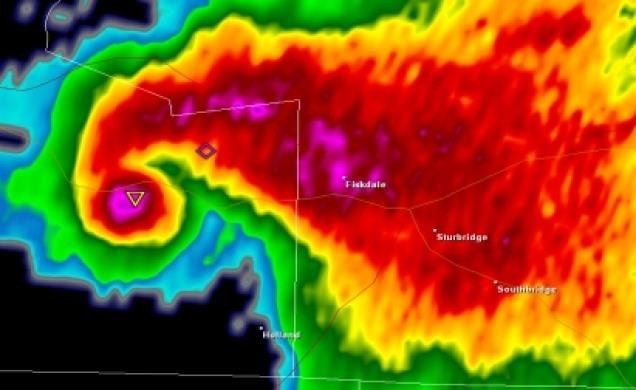-
Posts
76,551 -
Joined
-
Last visited
Content Type
Profiles
Blogs
Forums
American Weather
Media Demo
Store
Gallery
Posts posted by weatherwiz
-
-
Euro holding back southern stream energy ~D5...shocker.
-
Probably see some gravity waves with this leading to even more localized fun
-
One little early concern is potential for a pretty high DGZ based on the thermals...but the gradient from the sfc well into the upper-levels of the atmosphere is insane...the degree of lift on the favored sides of the lows will be through the roof. Way too early to really get into these specifics but just a thought. At this stage, the thing I love most is the evolution of the ULJ through New England...if there were to be a book written right now, that should be the cover page.
-
 1
1
-
-
1 minute ago, CT Valley Dryslot said:
IMHO a solution like that should be colder given the sfc high over Hudson Bay.
Not necessarily.
-
-
Great to see 850/700mb lows develop and close off as they're passing by. Seeing 700 close off overhead is not desired but that's kinda insignificant right now.
-
Some fairly sizable differences too with the evolution and structure of the ridge in the West.
-
 2
2
-
-
Just now, JC-CT said:
if the rapid deepening happens up here at our latitude, it should be fine. but yeah, nobody wants a storm that is already occluded before it gets here
Bingo...that's exactly what we would want...rapid deepening to occur at our latitude. This would also limit any potential for warmer air streaming into the region in the event of a coastal hugger.
-
2 minutes ago, JC-CT said:
this is all true. also why some of these deep ensemble members showing up haven't actually been that great region-wide. But there is something historic about a storm that strong that is cool in its own right.
For sure. And I get the love for them because of the wind potential but that just ends up screwing snow growth and ratios and essentially if you aren't under one of those bands...you're sucking pixie dust (or something just above that).
This is where QPF huggers really need to keep a realistic perspective here. This is a situation where mesoscale and very high-resolution models get their pay because they will really do a good job at painting this picture.
I just remember these type of storms being a pain b/c it is really impossible to portray the type of gradients that develop within forecast snow maps. one town can get like 20'' and a few towns away like 8'' lol.
-
2 minutes ago, PhineasC said:
Maybe you will get a tornado or something to track?
maybe in the ocean somewhere :lo:
1 minute ago, JC-CT said:because?
Historically, such situations where we see storms bomb out and develop such low pressure's at the center usually result in major headaches from not just a forecasting perspective but expectations. With tropical systems, how does the precipitation shield generally evolve? The precipitation shield tends to become more banded in nature...while the physical processes between these storms and tropical are vastly different, this is one commonalty...a more banded precipitation shield. So with this you develop very strong lift within narrow areas and then very strong subsidence between the bands.
-
I would much, much, much prefer to NOT have a cyclone bomb out or become as deep as advertised.
-
 1
1
-
 1
1
-
-
2 minutes ago, Ginx snewx said:
Gorgeous paste job. Perfect heading into Arctic air and the 24th -27th threat.
I appreciate your love of the extremes. You know how to enjoy both. In the summer you take advantage of the warmth/humidity and enjoy it the best way possible (pool side) and in the winter...you somehow enjoy the cold. kudos
-
5 minutes ago, 40/70 Benchmark said:
I think they are more common in the plains and midwest.
For sure...big time. That's where they get true flash freezes. If you ever follow the Winter Storm Severity Index from the WPC you'll see fairly common during the winter months areas shaded in moderate or higher impacts from flash freeze. I've never really seen any shading here about the limited or minor.
People say our weather changes quickly here...we've got nothing on the Inter-mountain West through Great Plains.
-
Flash freeze is the most over-used, beaten to death term in New England. There is a major difference between things icing up and a flash freeze. When temperatures go from 50's to lower 20's or teens in an hour or less span...then talk about flash freeze. Going from 46 to 42 to 37 to 32 to 30 to 27 in a several hour span doesn't constitute or result in a flash freeze.
-
 5
5
-
-
-
meh GFS looks like a shortwave shredding or flattening mess. That's a pretty brutal flow aloft
-
1 minute ago, JC-CT said:
Mesos definitely busted as being too cold though. We are behind temp wise.
Models always seem to be too aggressive (quick) in these cases. Maybe it's because of oceanic influences, but there seems to be a developing lag between FROPA's and rate of temperature decrease.
-
28 minutes ago, CoastalWx said:
Well enjoy what falls today. Looks like that’s it for awhile.
It is time
-
 2
2
-
 7
7
-
-
Well folks with winter (as in the actual definition of winter) quickly on the downward trend it's now time to gear towards the upcoming summer and more importantly, severe weather season. We really only have 3-full months left before we get to May 1 and the kickoff of severe season. The last few years have been quite intriguing as we've haven't had very active seasons...during the summer. But we have had several fall events, including several fall tornado-producing events. These seem to become more of a trend. Anyways, as winter heads towards the rear view mirror we now look ahead to severe weather season!!!!! With this let's let the countdown begin
101-days to go!!!!!
-
 3
3
-
 1
1
-
 7
7
-
-
This isn't even looking terribly impressive within the mid-Atlantic where they have the WSW's.
-
Talked about it in classes a few times but the term "flash freeze" is definitely used way too much around these parts. It's difficult to get a true flash freeze around here. We think our temperature drops with Arctic fronts are wild but they are nothing compared to what happens in other areas of the country...particularly from the Inter-mountain West just east of the Rockies through the Plains and into the upper-Midwest.
-
 3
3
-
-
I feel like in these type of set ups your highest snowfall totals typically occur closer to the coast because this is where there is greater enhancement with one reason being the strong temperature gradient between land/ocean temperature. You throw llvl fronts within this area and you vastly increase llvl convergence and subsequent upward vertical motion within this region. Also, being closer to a water source probably delays the onset of stronger dry air advection which occurs behind the front.
-
 1
1
-
-
1 minute ago, Damage In Tolland said:
Will be well north of the coast
doubt it
-
 1
1
-
-
1 minute ago, 40/70 Benchmark said:
I'm sitting this one out. Not worth it.
It's really not a big deal for most. I still think there is going to be a strip of 1-3'' (localized 4'' amounts) but it is going to be very narrow and be confined closer to the coast (though not the immediate coast).





Powerful Multi-regional/ multi-faceted east coastal storm now above medium confidence: Jan 29 -30th, MA to NE, with snow and mix combining high wind, and tides. Unusual early confidence ...
in New England
Posted
Agreed with this...especially in such a volatile setup...they do tend to do the explosive deepening a tad earlier and subsequently occlude earlier. In this scenario the deform band will essentially sit an rot